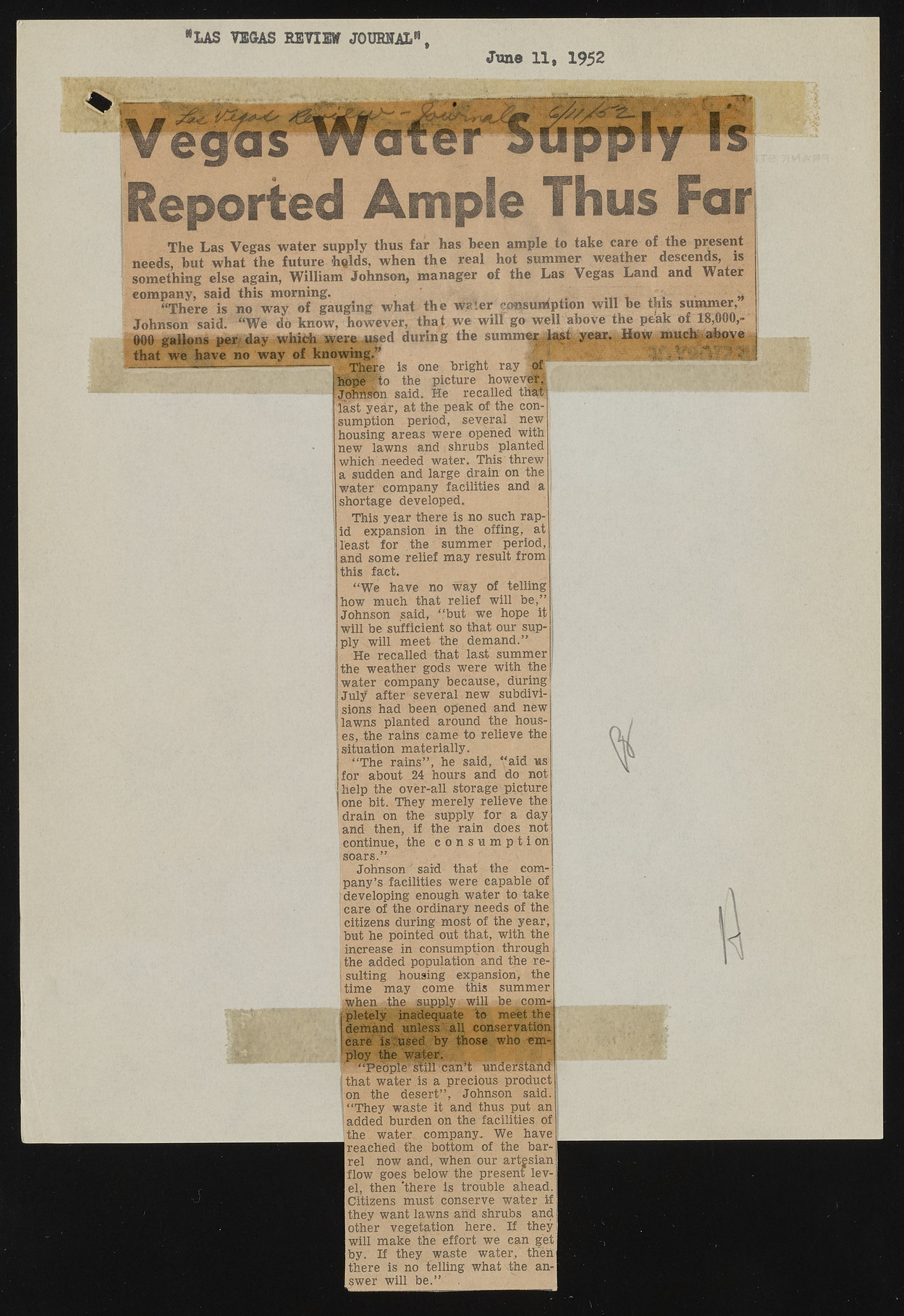Copyright & Fair-use Agreement
UNLV Special Collections provides copies of materials to facilitate private study, scholarship, or research. Material not in the public domain may be used according to fair use of copyrighted materials as defined by copyright law. Please cite us.
Please note that UNLV may not own the copyright to these materials and cannot provide permission to publish or distribute materials when UNLV is not the copyright holder. The user is solely responsible for determining the copyright status of materials and obtaining permission to use material from the copyright holder and for determining whether any permissions relating to any other rights are necessary for the intended use, and for obtaining all required permissions beyond that allowed by fair use.
Read more about our reproduction and use policy.
I agree.Information
Digital ID
Permalink
Details
Member of
More Info
Rights
Digital Provenance
Publisher
Transcription
LAS VEGAS REVIEW JOURNAL June 11, 1952 V e g ^ ' W a ^ S u ^ ! v i f Reported Ample Thus Far The Las Vegas water supply thus far has been ample to take care of the present needs, but what the future <h«lds, when the real hot summer weather descends,- is something else again, William Johnson, manager of the Las Vegas Land and Water company, said this morning. _ ,, “There is no wsy of gauging what- the water coiisuinptioii will he this summer, Johnson said. “We do know, however, that we will go well above the peak of 18,000,- 000 gallons per/ day which were Hged during the summ^l^st , year. How much^afyive that we have no way of knowing.” ilfW W sm P m -?----- — — -------------- — --------- There is one bright ray jo f hope Pto the picture however, Johnson said. He recalled that last year, at the peak of the consumption period, several new housing areas were opened with new lawns and shrubs planted ; which needed water. This threw a sudden and large drain on the | water company facilities and a j shortage developed. I This year there is no such rap- ; id expansion in the offing, at ! least for the summer period, 1 and some relief may result from this fact. “ We have no way of telling how mueh that relief will be,” Johnson said, “ but we hope it will be sufficient so that our supply will meet the demand.” | He recalled that last summer j the weather gods were with the ; water company because, during Juljf after several J new subdivi-j sions had been opened and new ' lawns planted around the hous- | es, the rains cam e to relieve the situation materially. “ The rains” , he said, “ aid us for about 24 hours and do not help the over-all storage picture one bit. They merely relieve the drain on the supply for a day and then, if the rain does not continue, the c 0 n s u m p t i on soars.” Johnson' said that the company’s facilities were capable of; j developing enough water to take I care of the ordinary needs of the j I citizens during most of the y ea r,! : but he pointed out that, with th e , ? increase in consumption through « 1 \\ ? the added population and tile re-| 1 M i suiting housing expansion, the j time may come this summer when the supply- will be com pletely inadequate ‘to meet the demand unless "all conservation car-fe' is.'used by those, who em - ploy the ?water. I “ F e^ lh su ir-ca n ’t understancf (that water is a precious product on the desert” , Johnson said. ? “ They waste it and thus put an ! added burden on the facilities of Ithe water, company. We have reached the bottom of the barrel now and, when our artesian flow goes below the present level, then 'there is trouble ahead. Citizens must conserve water if they want lawns and shrubs and other vegetation here. If they! will make the effort we can get by. If they waste water, then there is no felling what the answer will be.” .

